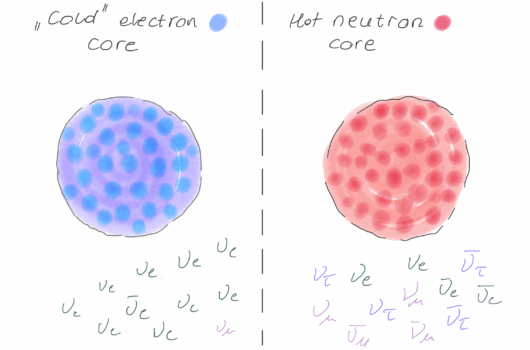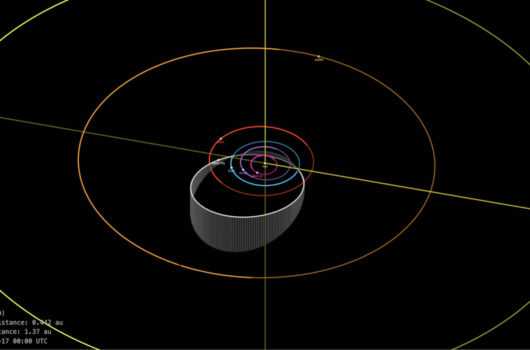What does perturbative QCD really have to say about neutron stars
What does perturbative QCD really have to say about neutron stars
View
Abstract
The implications of perturbative QCD (PQCD) calculations on neutron stars are carefully examined. While PQCD calculations above baryon chemical potential ![]() GeV demonstrate the potential of ruling out a wide range of neutron star equations of state (EOSs), these types of constraints only affect the most massive neutron stars in the vicinity of the Tolman-Oppenheimer-Volkoff (TOV) limit, resulting in bounds on neutron star EOSs that are orthogonal to those from current or future astrophysical observations, even if observations near the TOV limit are made. Assuming the most constraining scenario, PQCD considerations favor low values of the speed of sound squared
GeV demonstrate the potential of ruling out a wide range of neutron star equations of state (EOSs), these types of constraints only affect the most massive neutron stars in the vicinity of the Tolman-Oppenheimer-Volkoff (TOV) limit, resulting in bounds on neutron star EOSs that are orthogonal to those from current or future astrophysical observations, even if observations near the TOV limit are made. Assuming the most constraining scenario, PQCD considerations favor low values of the speed of sound squared ![]() at high
at high ![]() relevant for heavy neutron stars, but leave predictions for the radii and tidal deformabilities almost unchanged for all the masses. Such considerations become irrelevant if the maximum speed of sound squared inside neutron stars does not exceed about
relevant for heavy neutron stars, but leave predictions for the radii and tidal deformabilities almost unchanged for all the masses. Such considerations become irrelevant if the maximum speed of sound squared inside neutron stars does not exceed about ![]() , or if the matching to PQCD is performed above
, or if the matching to PQCD is performed above ![]() GeV. Furthermore, the large uncertainties associated with the current PQCD predictions make it impossible to place any meaningful bounds on neutron star EOSs as of now. Interestingly, if PQCD predictions for pressure at around
GeV. Furthermore, the large uncertainties associated with the current PQCD predictions make it impossible to place any meaningful bounds on neutron star EOSs as of now. Interestingly, if PQCD predictions for pressure at around ![]() GeV is refined and found to be low (
GeV is refined and found to be low (![]() GeV/fm
GeV/fm![]() ), evidence for a soft neutron star inner core EOS would point to the presence of a strongly interacting phase dominated by non-perturbative physics beyond neutron star densities.
), evidence for a soft neutron star inner core EOS would point to the presence of a strongly interacting phase dominated by non-perturbative physics beyond neutron star densities.




